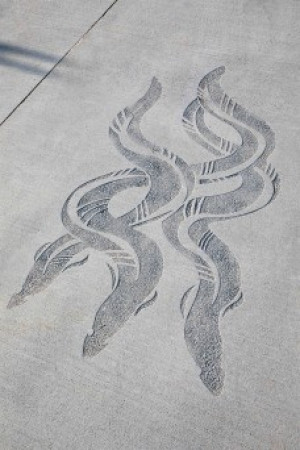Celebrating the opening of Freeland Reserve in Roskill South
8 十一月 2022
On Saturday 29 October the Roskill South community joined the Kāinga Ora Roskill Development Team to celebrate the reopening of Freeland Reserve.
Over 500 people and 23 community groups joined Kāinga Ora, Piritahi, build partners, mana whenua, and members of the local board in celebration of the new community amenity and the completion of the first shovel ready project in a Kāinga Ora Large Scale Project.
Singing and dancing acts, a kapa haka performance by the local primary school, a classic kiwi sausage sizzle, and a scavenger hunt with an ice cream prize were just some of the family fun events enjoyed by everyone.
Previously an area prone to flooding, lacking safe walking links for locals, and with a history of anti-social behaviour, the newly completed recreation and community space now reflects the community and mana whenua.
Local whānau attending the community day talked about loving the new bird life and were keen to explore what other creatures lived in the awa, while others said they finally felt safe spending time in the reserve.

Kāinga Ora Director of Large-Scale Developments, Christian Hurzeler, says it is now a place that people can be proud of.
“The reserve provides a safe route for school children to get from parts of Roskill South over to May Road Primary School,” says Christian. “It provides a place for local connection and genuine recreation.”
The reserve’s wetland capacity has been increased with over 100 native trees and close to 8000 plants added to the reserve, creating a better habitat for wildlife, while improving storm water quality downstream.
This increased capacity has been further bolstered by three new floodwalls, and Kāinga Ora Senior Development Manager, Lucy Smith, says all the hard mahi has already proven its worth.
“Just weeks after the wetland and floodwalls were completed, the area experienced the most rainfall in a single hour since 1969 – and all water was redirected away from homes successfully.”
The new Freeland Reserve network has also allowed the Oakley Creek/Te Auaunga Awa to be returned to its natural state, daylighting the previously piped stream.
“Many years ago the stream was piped below the ground, and now we have return the water back to its natural state for everyone to enjoy,” Lucy says.
“This upgrade not only improves stormwater quality downstream, it’s also eliminated the need for individual detention tanks across the neighbourhood and serves as stormwater treatment for around two thirds of the Roskill South development.”
Art brings the awa to life
Local artists’ and collaborators’ designs and work now adorn structures all across the park, providing an essential connection to the community and its history.
 “Artist Numangatini Mackenzie created beautiful designs representing Te Auaunga and the tuna [eel] that we hope will return to enjoy their fantastic bespoke fish ladder,” says Lucy.
“Artist Numangatini Mackenzie created beautiful designs representing Te Auaunga and the tuna [eel] that we hope will return to enjoy their fantastic bespoke fish ladder,” says Lucy.
The tohu connects the reserve to the rest of the waterway.
Storyboard artist Hinengarangi Makoare worked with Ngāti Whātua Ōrākei, Te Ākitai Waiohua, Context landscape architects, and students from Auckland City Education Services, to create beautiful kōwhatu storyboards seen across the reserve.
“These storyboards will take all who visit the reserve on this special journey of connecting through history with the maunga, moana and the mauri of Te Auaunga,” says Lucy.
Lucy says she is grateful to the community for their patience and support during construction, and is proud to see the reserve finished and ready for the wider community to enjoy.
“It is a true testament to the collaboration between Auckland Council’s Healthy Waters, the Puketāpapa Local Board, Piritahi, mana whenua, Kāinga Ora, and all those who have been involved to deliver a great outcome for the community.”
Read more about the 'Art brings the awa to life(external link)'.
Media Contact
页面已更新: 8 十一月 2022
